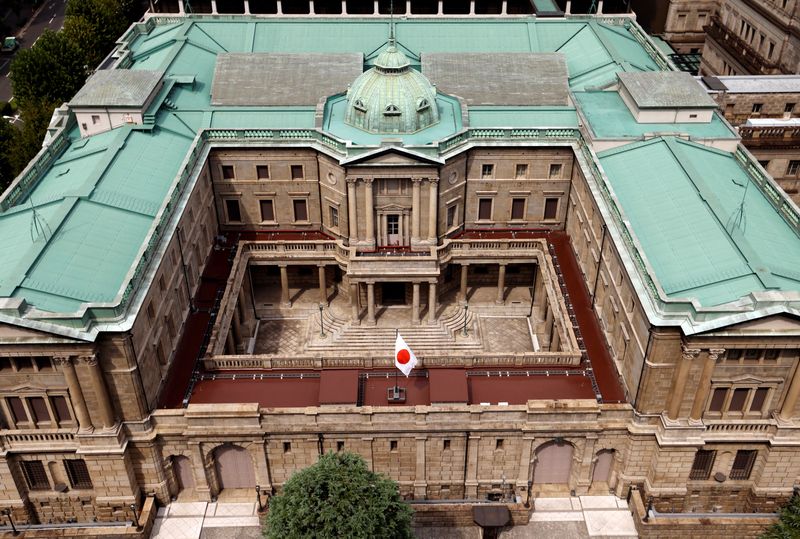By Leika Kihara
TOKYO (Reuters) – Japan’s monetary base, or the amount of cash circulating in the economy, grew at the slowest annual pace in seven months in March, a sign the central bank was phasing out remnants of former Governor Haruhiko Kuroda’s massive stimulus programme.
The Bank of Japan (BOJ) is likely to allow cash circulation to continue to slow after it last month abandoned a commitment to keep increasing monetary base until inflation stably exceeds its 2% inflation target, analysts say.
The 1.6% year-on-year increase in March marked the fifth straight month of slowdown and the smallest rise since August last year, BOJ data showed. It followed a 2.4% gain in February.
Separate data, released on Monday, also showed the BOJ bought 5.9 trillion yen ($39 billion) worth of government bonds outright in March, about half the amount bought in the same month of the previous year.
The readings follow an official end to the radical stimulus deployed by former BOJ chief Kuroda that sought to eradicate Japan’s deflationary mindset with huge money printing and asset purchases.
The BOJ ended eight years of negative interest rates and other remnants of its unorthodox policy last month, making a historic shift away from its focus on reflating growth with decades of massive monetary stimulus.
While the central bank also ditched its bond yield control, it pledged to maintain its monthly pace of bond purchases at roughly 6 trillion yen for the time being.
“The BOJ is still conducting the most powerful monetary easing policy in the world. It’s also very cautious about raising interest rates or moving to quantitative tightening (QT),” said Izuru Kato, chief economist at Totan Research.
“The footprints that the BOJ left in markets through its ultra-easy policy will remain huge for the time being.”
Governor Kazuo Ueda has said the BOJ will eventually scale back bond purchases and allow market forces to set long-term interest rates, though offering few clues on the timing.
But reducing the BOJ’s balance sheet which, at 687 trillion yen exceeds the size of Japan’s economy, won’t be easy.
Trimming the BOJ’s bond buying could trigger an abrupt spike in yields that pushes up the cost of financing the country’s massive public debt.
If the BOJ were to maintain the current pace of buying, it would still be purchasing roughly 54% of long-term bonds sold by the government in the fiscal year that began in April, according to estimates by Totan Research.
While that is lower than 98% in fiscal 2022, it would still be much higher than the average 24% during the era of Governor Masaaki Shirakawa, who served before Kuroda, the estimates showed.
($1 = 151.7700 yen)
